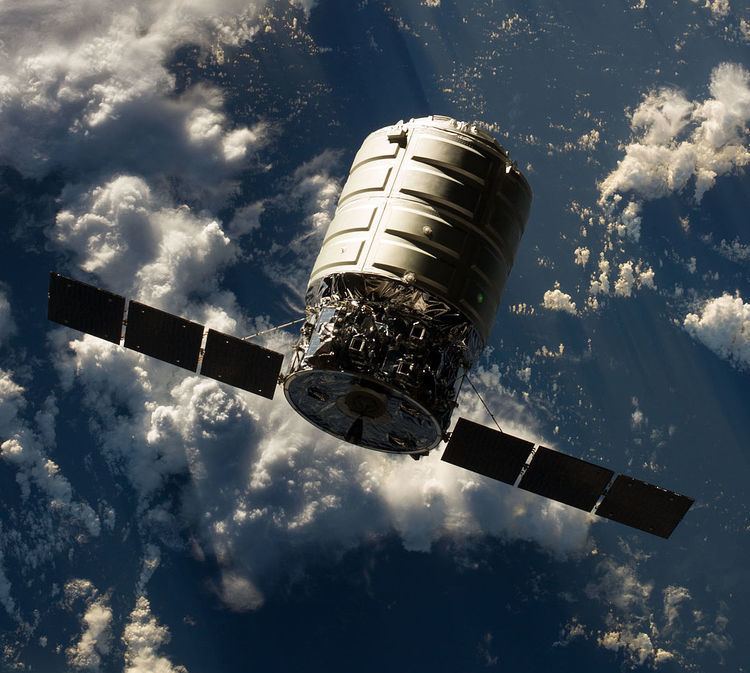Operator Orbital Sciences SATCAT no. 39258 | COSPAR ID 2013-051A | |
 | ||
Mission type Technology demonstrationISS resupply Mission duration 35 days, 3 hours, 17 minutes | ||
Cygnus Orb-D1, also known as Cygnus 1 and Orbital Sciences COTS Demo Flight, was the first flight of the Cygnus unmanned resupply spacecraft developed by Orbital Sciences Corporation. It was named after the late NASA astronaut and Orbital Sciences executive G. David Low. The flight was carried out by Orbital Sciences under contract to NASA as Cygnus' demonstration mission in the Commercial Orbital Transportation Services (COTS) program. Cygnus was the seventh type of spacecraft to visit the ISS, after the manned Soyuz and Space Shuttle, and unmanned Progress, ATV, HTV and Dragon.
Contents
Spacecraft
The Orb-D1 mission was the first flight of the Cygnus spacecraft and used the standard configuration with a Pressurized Cargo Module.
Orbital named this mission's Cygnus spacecraft the G. David Low after the former NASA astronaut and Orbital employee who died of cancer on 15 March 2008. During a media briefing for the CRS Orb-1 mission, Orbital Sciences executive vice president Frank Culbertson stated, "We were very proud to name that [Cygnus] the G. David Low."
Launch and early operations
Cygnus Orb-D1 was launched by an Antares 110 rocket flying from Pad 0A at the Mid-Atlantic Regional Spaceport. The launch took place at 14:58:02.2 UTC on 18 September 2013, and successfully inserted the Cygnus into low Earth orbit. The launch marked the second flight of the Antares rocket and the final flight of the interim Antares 110 configuration.
ISS rendezvous
Rendezvous with the ISS was originally scheduled for the fourth day of the mission. However, the rendezvous was postponed due to a computer data link problem. The exact error related to small discrepancies between the way the ISS and Cygnus each use GPS for timekeeping purposes. A further delay was necessary to allow for the arrival of Soyuz TMA-10M with three new ISS crew members.
A week late, the spacecraft conducted a series of navigation, control and safety tests as it approached the station. Following the successful completion of ten test objectives, the spacecraft was cleared to make its final approach, holding 12 metres (39 ft) below the ISS. Then, Italian astronaut Luca Parmitano grappled it at 7 a.m. EDT (GMT-4), 29 September 2013, using the Canadarm2 remote manipulator system as the two spacecraft sailed high above the Indian Ocean. Cygnus was berthed to the nadir port of the station's Harmony node.
Payload
Cygnus carried 700 kg (1,543 lb) of cargo to the ISS, including food and spare parts. After unloading, the spacecraft was loaded with 1,290 kg (2,850 lb) of cargo for disposal.
End of mission
On 22 October the Canadarm2 was used to unberth the Cygnus spacecraft from the nadir port of the Harmony module at 10:04 UTC. The spacecraft was then maneuvered to a release position below the station, where it was released from the RMS at 11:31 UTC. It then performed a series of separation maneuvers away from the station. The spacecraft fired its main engine to de-orbit itself on 23 October at 17:41 UTC, with reentry and burning up in the atmosphere over the southern Pacific Ocean occurring at 18:16 UTC.
